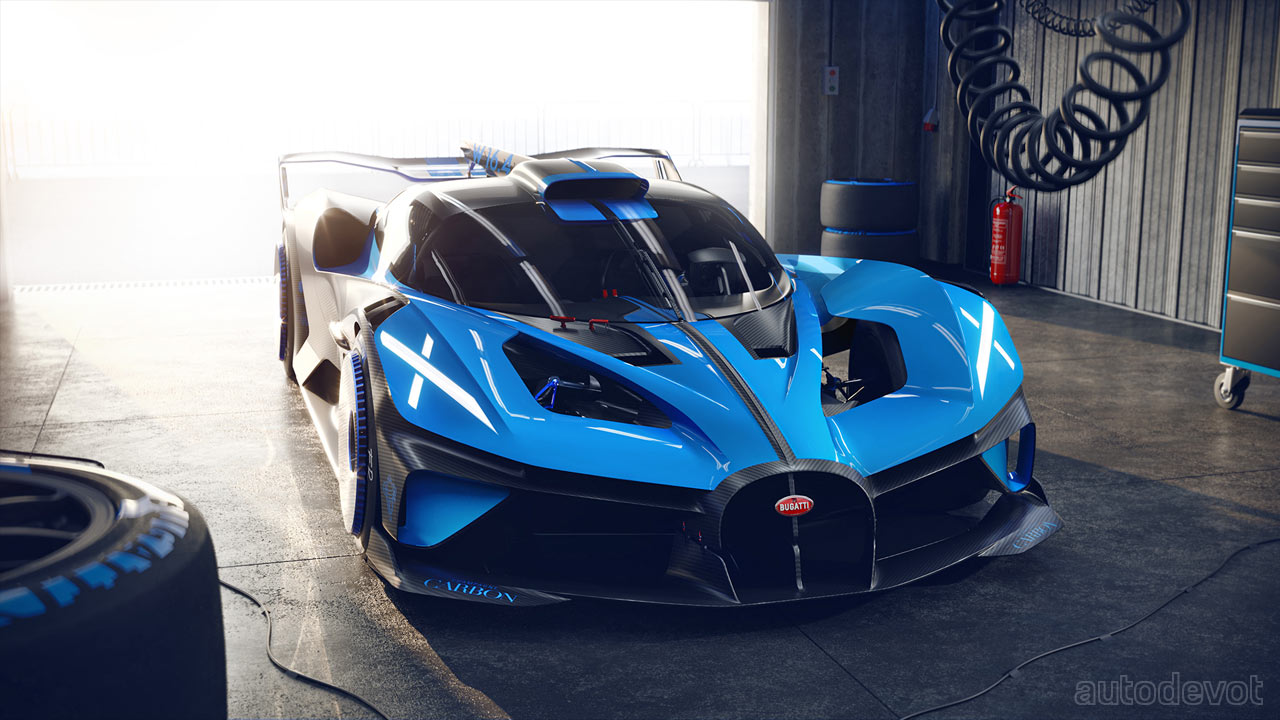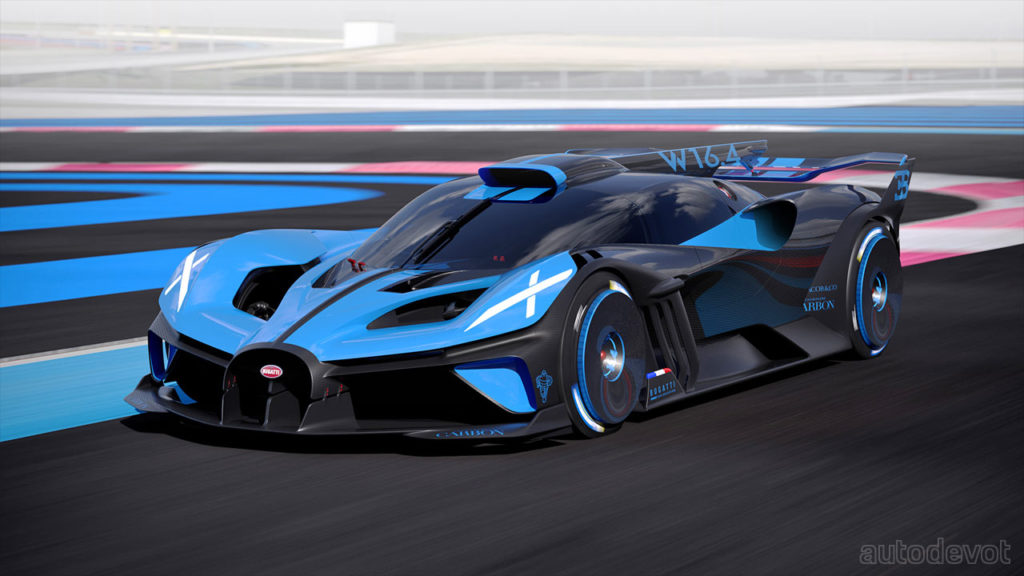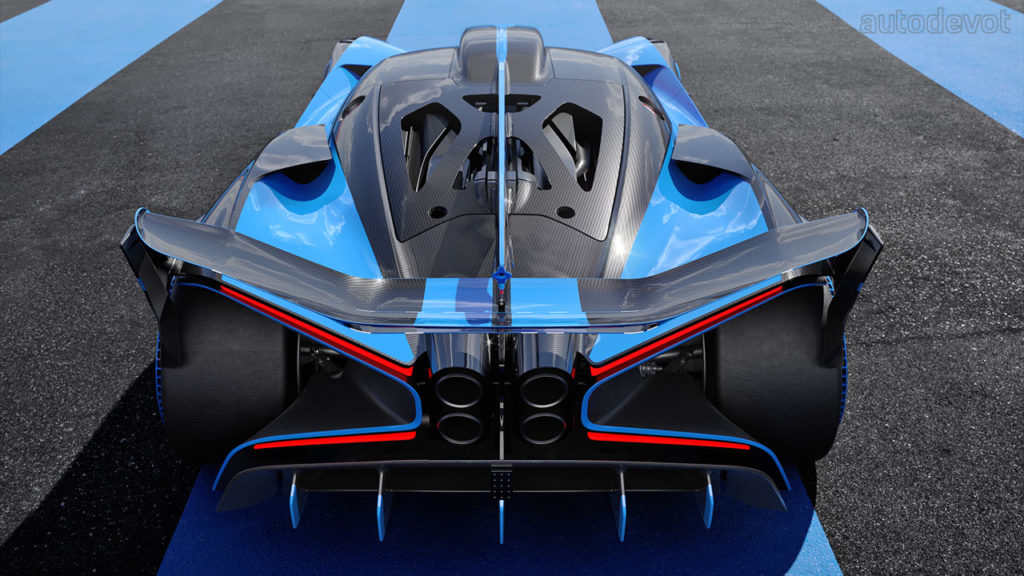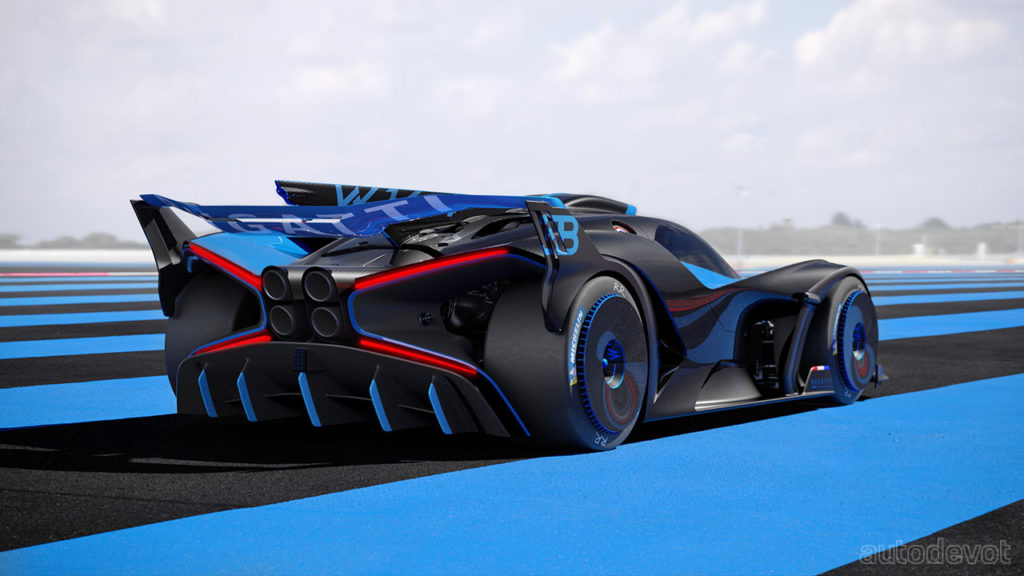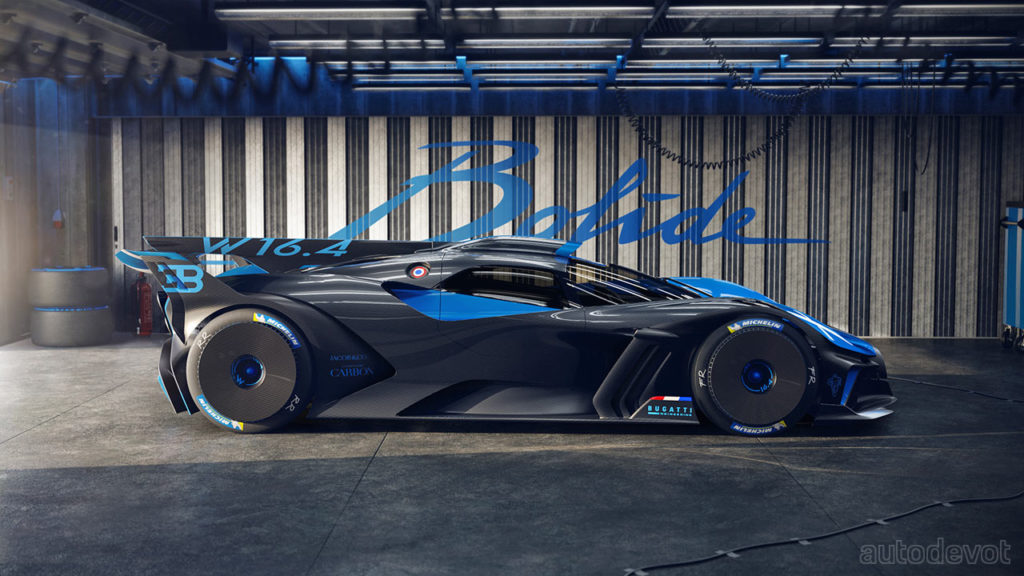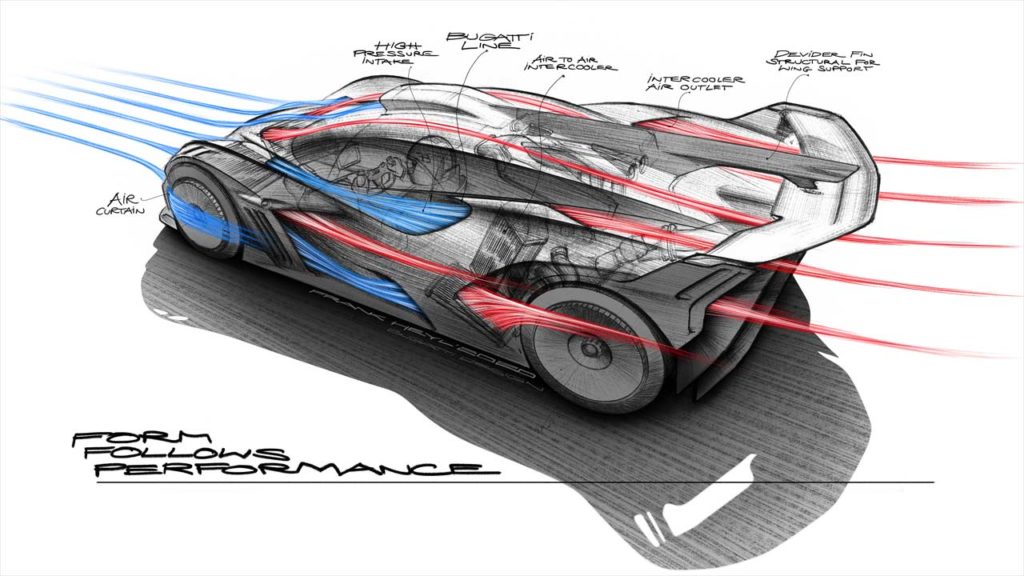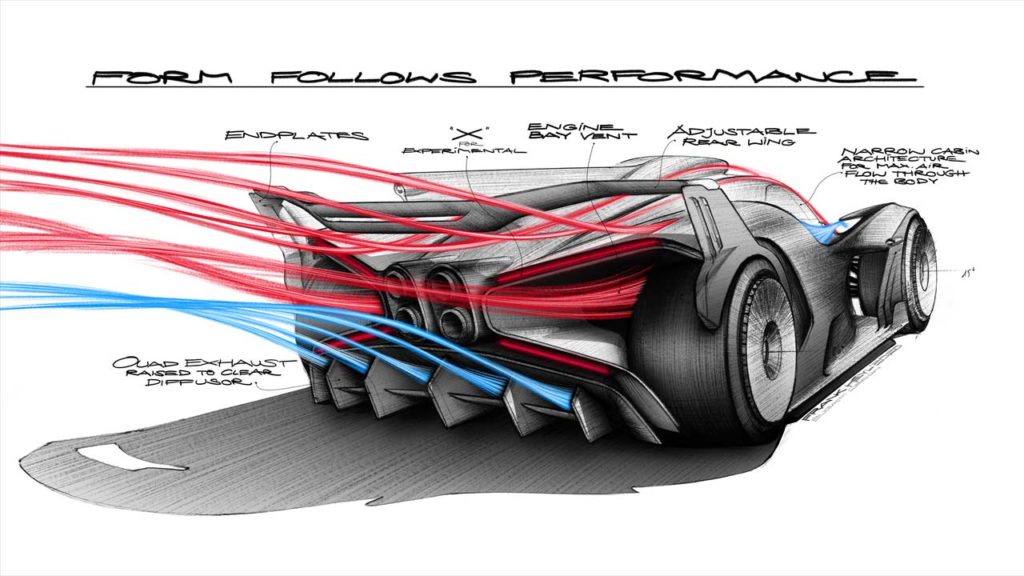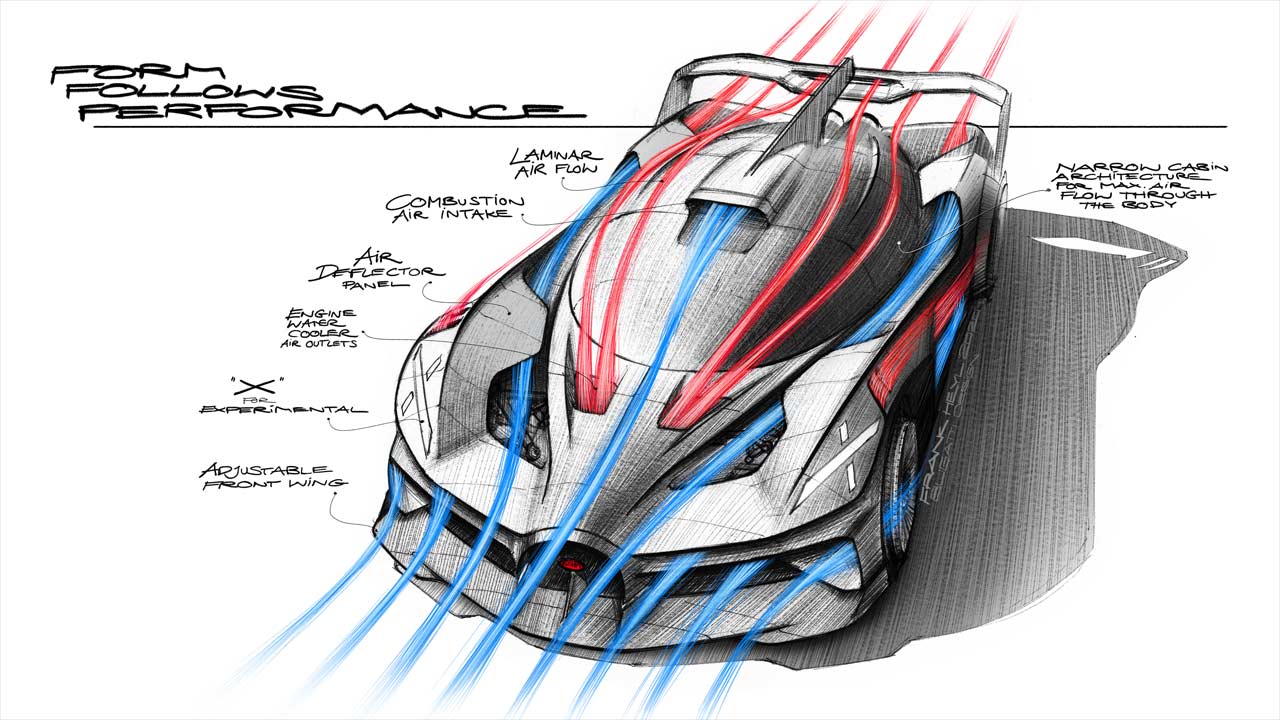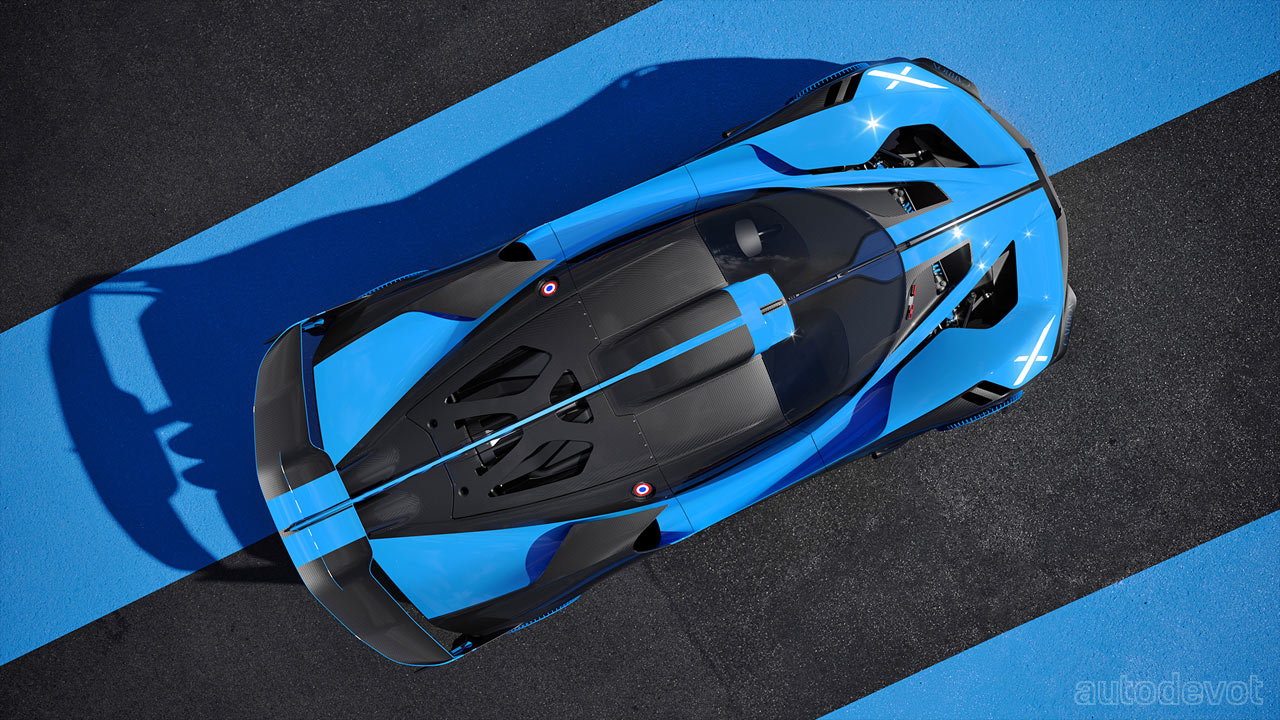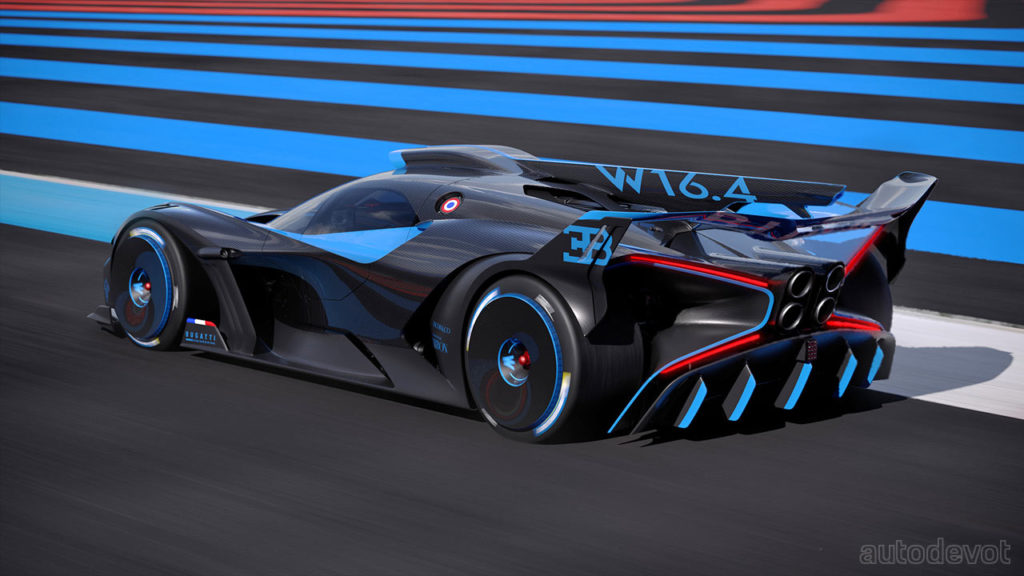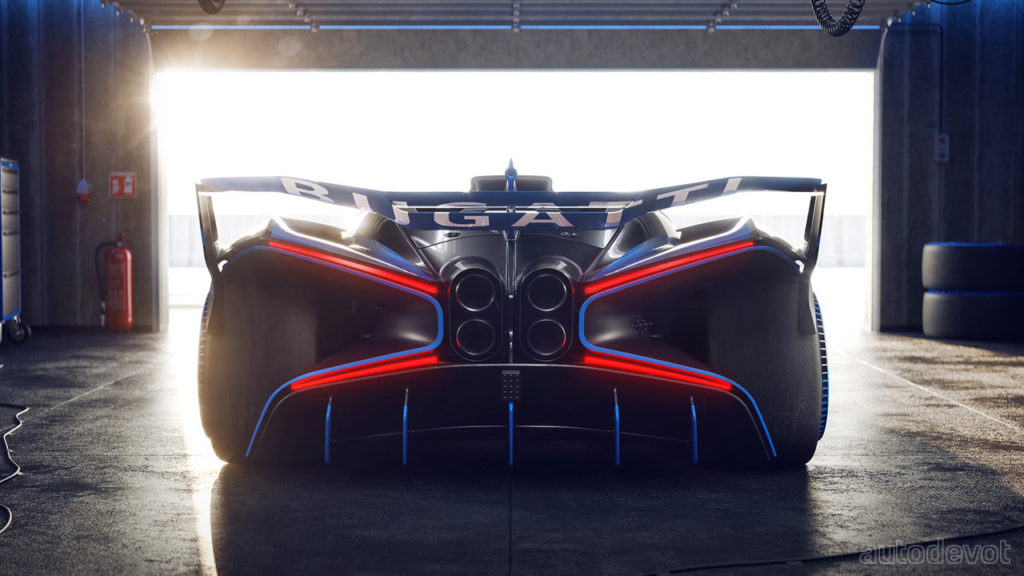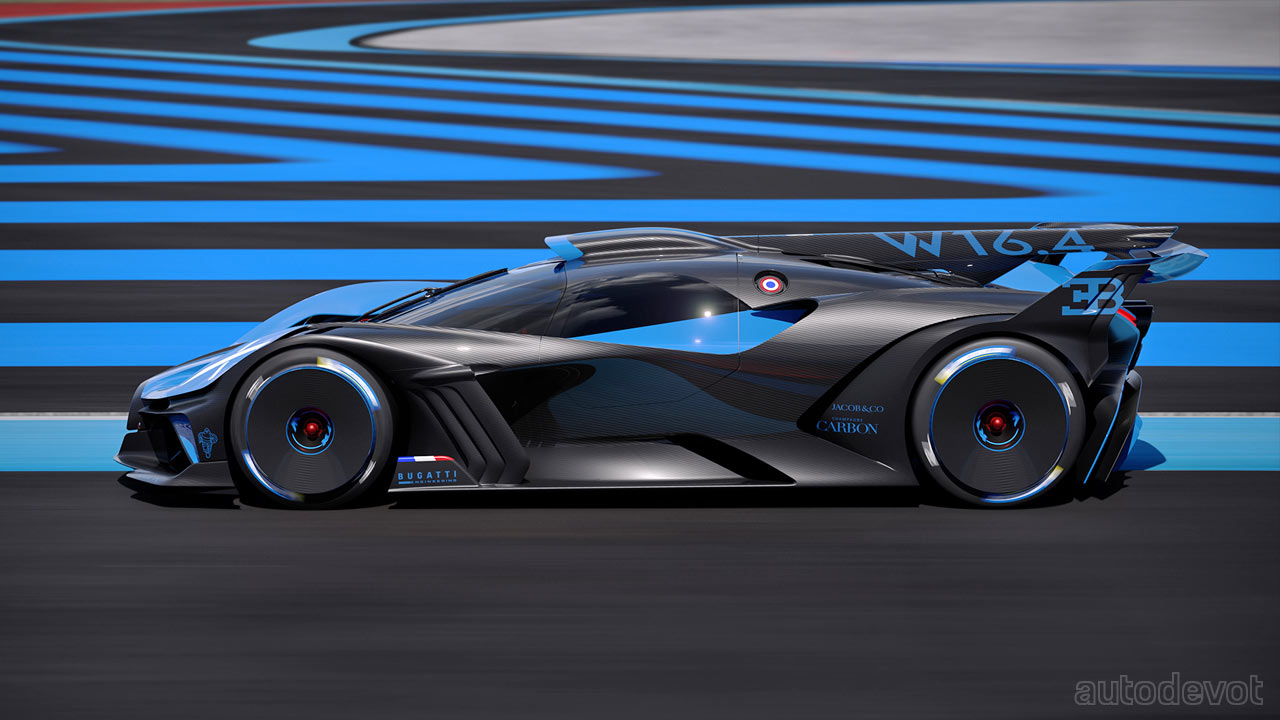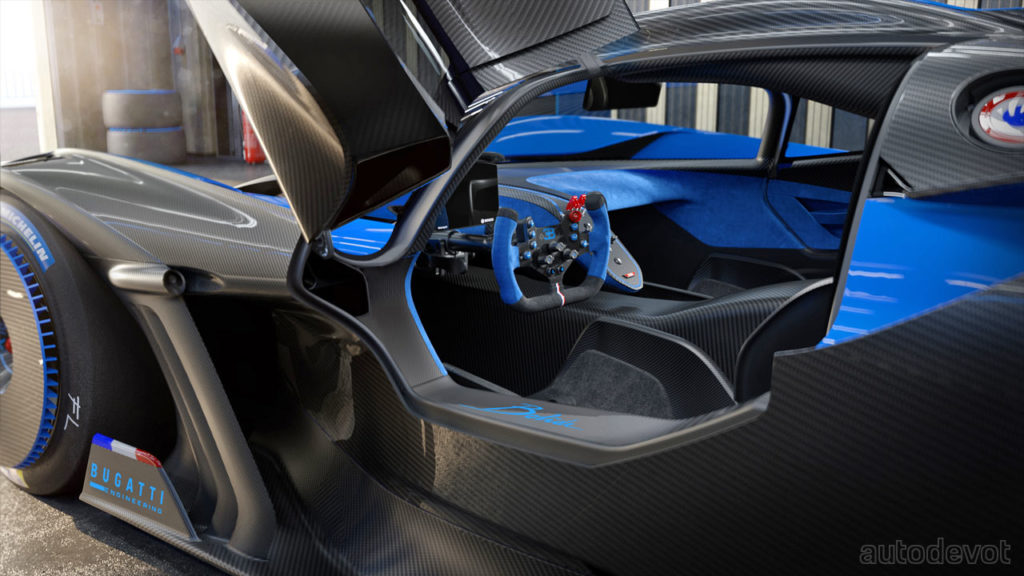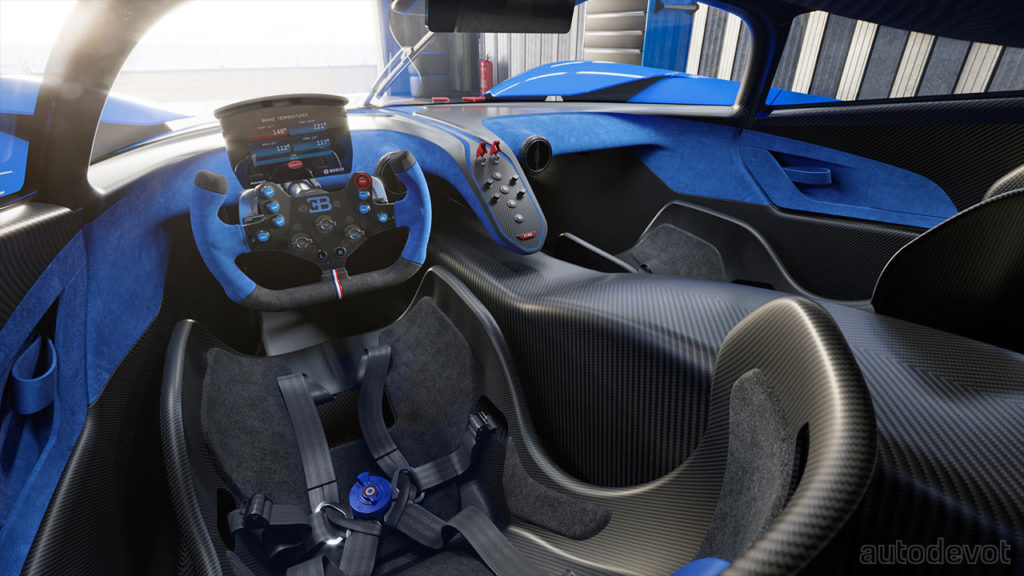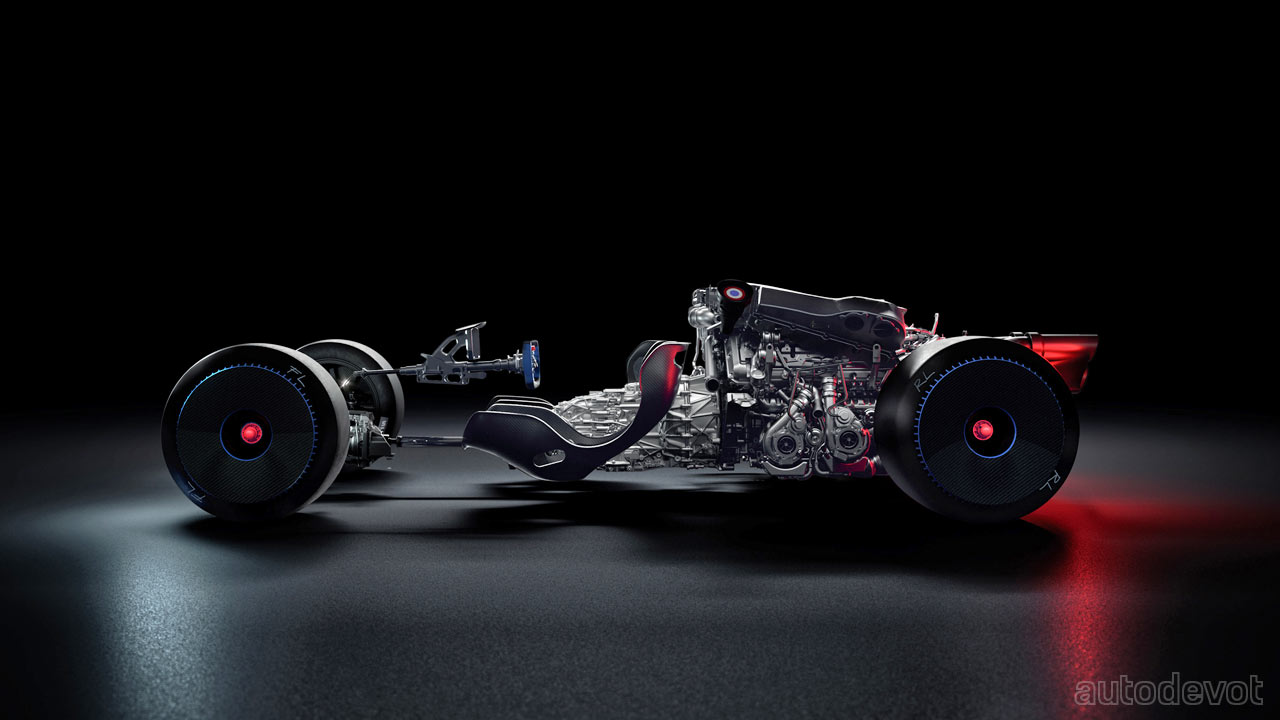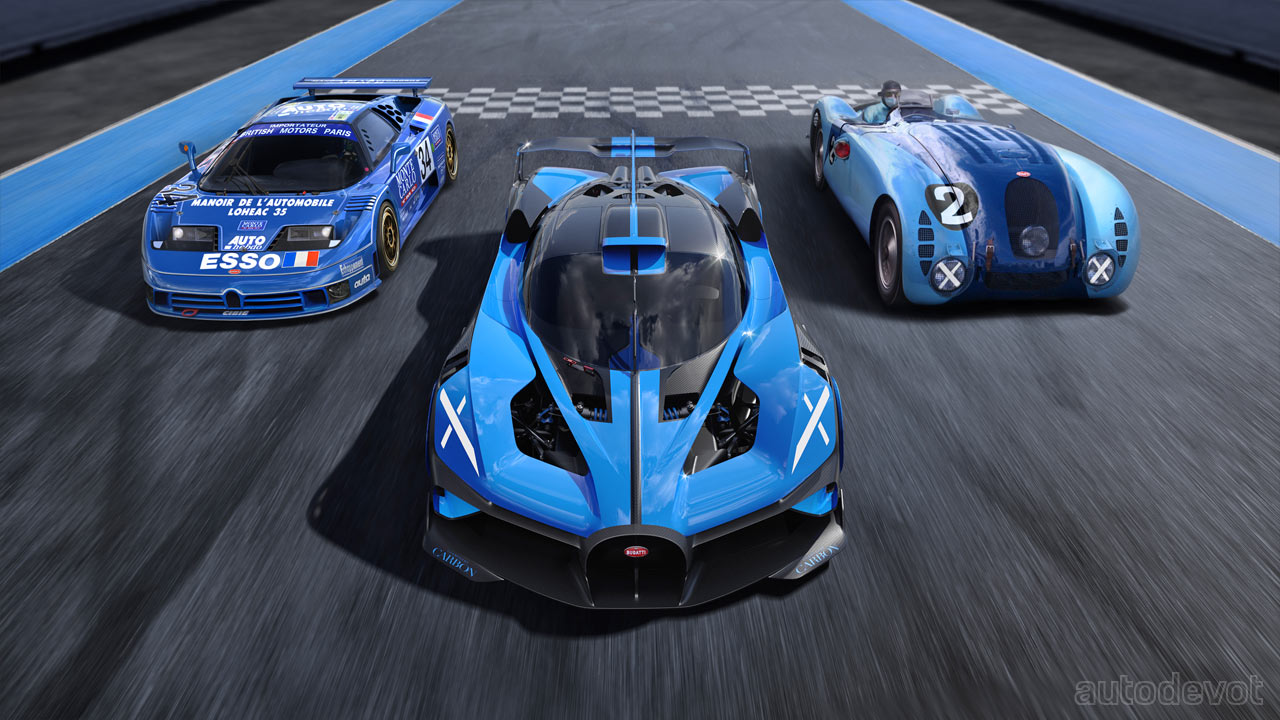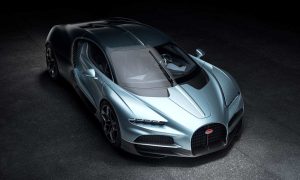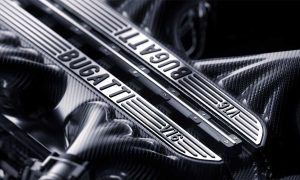The “what if..?” question Bugatti was asking with an ‘X’ shaped taillight teaser, now has the answer. But, not a full answer. Will come back to that in a bit. I think, firstly, we should finish that question. Which is, “what if Bugatti developed an extreme, track-focused hyper sports car with an unprecedented weight-to-power ratio of only 0.67 kg per PS?”
And the answer is this wild-looking, track-only concept called ‘Bolide’. Yes, Bugatti is referring to this as a concept. Not entirely sure what the name means, but here are some key details that you might immediately want to know: it packs a reworked version of the W16 quad-turbo engine that now develops 1,850 metric hp and 1,850 Nm (1,364 lb-ft) of torque, that is with 110-octane racing fuel. The hyper track car weighs only 1,250 kg dry (2,756 lbs) and therefore has a weight-to-power ratio of 0.67 kg per hp.
Now that’s out of the way, let’s talk a little bit about the way it looks. It has got a lot of gaps, gapes and negative spaces, obviously. In some angles, it kinda reminds me of the Valkyrie, while the rear profile reminds me of Evija. Take a look at those sketches to get a better idea of how those gaps function and how the air flows around and through the car itself. The traditional ORVMs have been replaced with cameras, obviously. The ‘X’ shaped light signatures at the front and rear, were apparently inspired by the Bell X-1 aircraft that was flown by Captain Charles “Chuck” Yeager in 1947. In case you’re wondering, the prototype is finished in French Racing Blue, with generous exposed carbon fibre bits.
If that’s not “cool” enough, the Bolide also boasts active airflow optimization. When driven at slow speeds, the surface of that air scoop remains smooth, and when the speed increases, a field of bubbles bulges out. This is claimed to reduce the aerodynamic drag of the scoop by 10% and ensure a 17% reduction in lift forces.
Also, at 320 km/h (199 mph), the downforce is at 1,800 kg (3,968 lbs) on the rear wing and 800 kg (1,764 lbs) on the front wing. As for braking, the Bolide is fitted with 380 mm ceramic discs with 6-piston calipers; the calipers weigh 2.4 kg (5.3 lbs) each. The wheels are forged magnesium 18-inch ones, with the front one weighing 7.4 kg (16.3 lbs) while the rear weighing 8.4 kg (18.5 lbs). They are wrapped with Michelin racing slicks measuring 340 mm wide at the front and 400 mm wide at the rear. As you can see from the photos, the front has push-rods; made of titanium, they weigh only 100 grams.
Obviously, Bugatti has done everything that is possible to achieve that dry weight despite an 8.0-litre W16 lump mounted onto the monocoque. While most of the hypercar is made of a high-strength carbon-fibre with a single-fibre tensile strength of 6,750 N (newtons) per square millimetre, all the screw and fastening elements are made completely out of titanium. In addition, several functional components are made of 3D printed aerospace-grade titanium alloy. They’re extremely thin with wall thicknesses of up to 0.5 mm, however, they are claimed to have a tensile strength of 1,250 N/sq mm.
The cockpit looks fairly simple with only essential features on offer. The dashboard and the door cards have some Blue Alcantara inserts to add some contrast against the exposed carbon surroundings. A French flag stripe on the steering looks tasteful. Also, notice the driving position, which is almost like sleeping and driving. However, both the pedals and the passenger footrest can be moved by 150 mm for better comfort.
As mentioned, the 8.0-litre W16 quad-turbo motor has been optimized for track use and so is the 7-speed DSG gearbox. The turbochargers are new and feature optimized blades in order to build up more boost pressure and power at higher engine speeds. For optimum lubrication even under extremely high centrifugal forces, the oil circuit, oil pressure, check valves, baffles, oil tanks, oil reservoirs, and pump design of the dry sump lubrication have been optimized as well.
Also, instead of water-to-air intercooling, the Bolide has air-to-air intercooling with water pre-cooling for optimal performance on the racetrack.
The inflow takes place from the front via one internal and one external air duct on each side of the vehicle. The two water coolers, which are arranged in front of the front axle, provide a more effective radiator system in terms of flow than is customary even in Formula 1. Three air-cooled oil coolers for engine, transmission, and differential with water pre-cooling reduce the temperature even on dynamically demanding race laps. Newly developed and hybrid carbon titanium turbofan radial compressors ventilate and cool the high-performance brake system.
The estimated performance figures are wild as well. A 0-100 km/h (62 mph) in 2.17 seconds; 0-500 km/h (311 mph) in 20.16 seconds; and 0-500-0 km/h in 33.62 seconds. Yes, the top speed is estimated to be over 500 km/h. The Bolide takes 3:07.1 minutes to complete a lap of Le Mans and 5:23.1 minutes to get around the Nordschleife, Bugatti added. Download the technical data here.
So, how much is the Bolide gonna cost and how many will be produced? Well, even Bugatti doesn’t have that answer yet. “Whether the Bugatti Bolide will go into series production, has not been decided yet,” the company said in an official release.
Also, check out: Watch Bugatti Bolide’s Dimple Airscoop in action

Leave a Reply
Note: Comments that are unrelated to the post above get automatically filtered into the trash bin.
